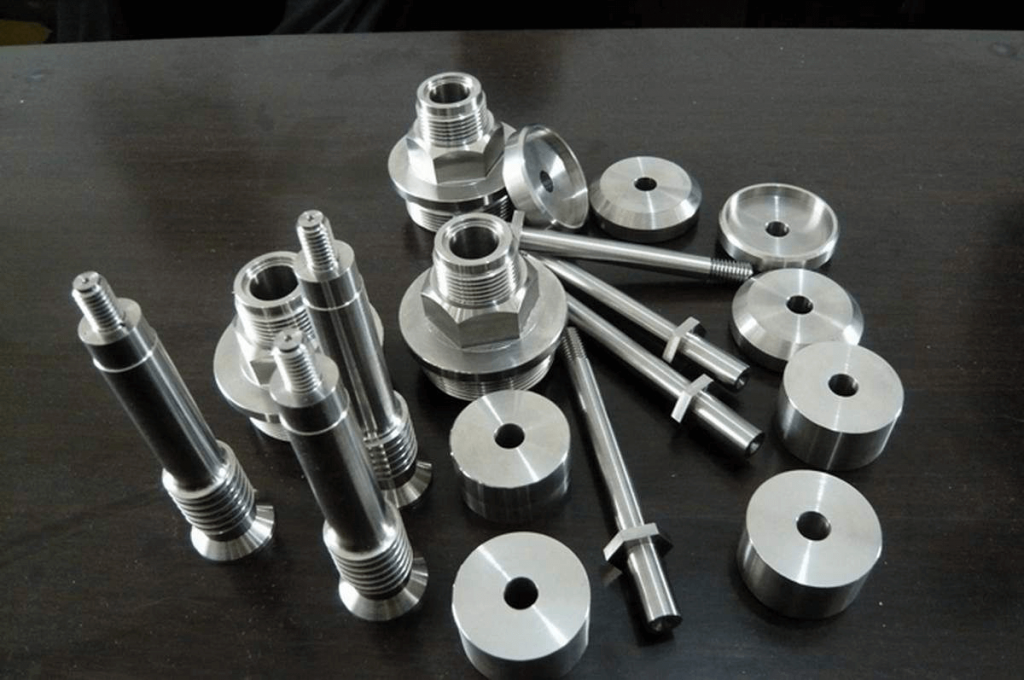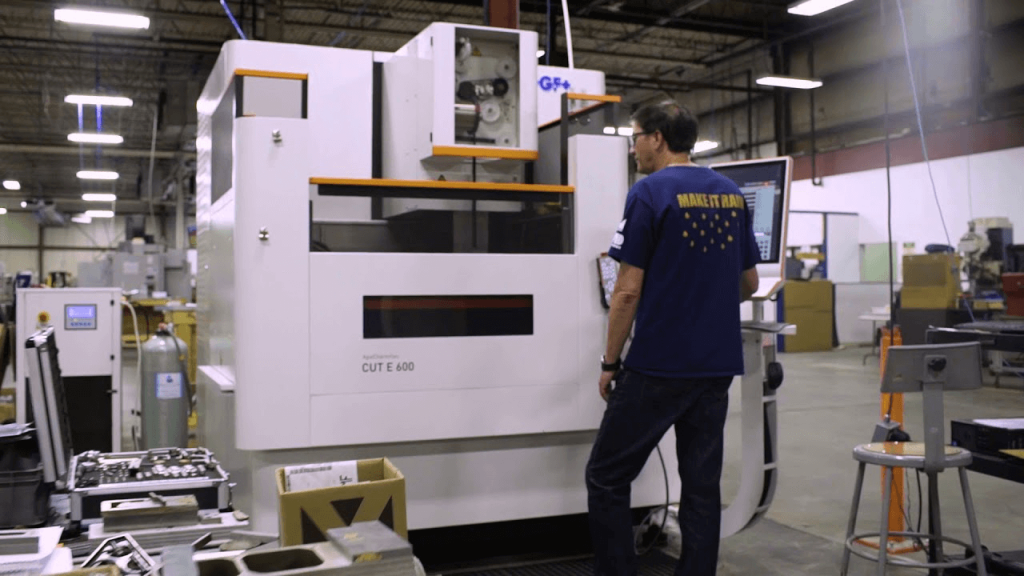Nguyên mẫu nhanh các bộ phận CNC: Ưu và nhược điểm của việc sử dụng gia công CNC
Bộ phận CNC Nguyên mẫu nhanh: Ưu và nhược điểm của việc sử dụng gia công CNC
Các đặc quyền của việc sử dụng máy CNC
Tạo mẫu nhanh hiện đang dẫn đầu ngành sản xuất. Có một số kỹ thuật để tạo ra các nguyên mẫu chất lượng cao, chính xác và chức năng. Kỹ thuật tạo mẫu nhanh các bộ phận CNC là một trong số đó. Các kỹ thuật sử dụng gia công CNC để tạo ra nguyên mẫu rất gần với sản phẩm thực tế.
Below, we are going to talk about the advantages and the disadvantages of prototyping via CNC machining. So, without any further delay, let us get started!
Merits and Demerits
For starters, let us focus on the advantages of prototyping using the CNC machining.

Advantages of CNC Rapid Prototype
File to Prototype
With CNC machining it is possible to effortlessly transfer your ideas from file directly to 3D prototypes. After all, CNC machining is a digital technique responsible for creating parts using computer file information. Therefore, the engineers are sure that the machining prototype would be close to the digital 3D design.
Có thể sử dụng cùng một thiết kế với cùng kích thước để tạo ra các bộ phận cuối cùng. Với gia công CNC, mức độ lặp lại rất ấn tượng và cao. Ngoài ra, khi sử dụng các thiết kế kỹ thuật số, rất dễ dàng thực hiện các thay đổi.
Trong trường hợp có vấn đề với nguyên mẫu đã gia công. Ví dụ, nó thể hiện một dị dạng thể chất nhất định. Các kỹ sư sẽ quay trở lại phần mềm CAD và thực hiện tất cả các thay đổi cần thiết để loại bỏ các lỗi trong nguyên mẫu tiếp theo.
Có thể tạo nhiều phiên bản cạnh nhau. Hơn nữa, phần mềm mô phỏng sẽ giúp xác định cách một bộ phận nhất định sẽ hoạt động trong thế giới thực.
Tính nhất quán và chất lượng
Chúng tôi hiểu rằng không có sự hoàn hảo trong thế giới thực, ngay cả máy tính cũng không hoàn hảo. Tuy nhiên, máy móc do máy tính điều khiển có xu hướng hoạt động chính xác như chúng được hướng dẫn, trừ khi có một số lỗi hoặc nó bị hỏng.
Có một số quy trình nguyên mẫu dựa vào kỹ năng của con người, trong trường hợp đó, luôn có khả năng xảy ra sai sót. Mặt khác, gia công CNC là một quá trình hoàn toàn tự động. Nó sẽ tuân theo các nguyên tắc để hoàn thiện.
Hơn nữa, kỹ thuật này đảm bảo độ chính xác lặp lại bình đẳng cao. Nó có nghĩa là nó có thể mang lại cùng một kết quả lặp đi lặp lại mà không có bất kỳ sự khác biệt nào. Vì máy có thể chạy cùng một công việc lần thứ hai với những thay đổi tối thiểu, do đó, nó là một lựa chọn tuyệt vời cho các lần lặp lại mới của nguyên mẫu.
After all, with automated machinery, manufacturers are able to guarantee consistency. Something that is imperative not only for CNC parts Rapid Prototype manufacturing, but also for mass production.
Range of Strong Materials
In case the prototype does not have any mechanical purpose, it is wise to use a 3D printing technique for its creation. After all, 3D printing is an effective technique to create prototypes. It offers high-strength part and it affordable.
Using 3D printing, you can create prototypes overnight. However, when it comes to material options, the 3D printing techniques of limited material options especially in comparison to the machining techniques.
Với gia công CNC, bạn có quyền truy cập vào nhiều loại vật liệu tương thích. Những vật liệu này mang lại sự chắc chắn, chất lượng và độ bền. Phạm vi vật liệu cũng bao gồm một số kim loại. Bảng dưới đây cho thấy một số vật liệu gia công CCN.
| Kim loại | Chất dẻo |
| Nhôm | PHẦN |
| Thép không gỉ | PP |
| Thép | máy tính |
| Magiê | PS |
| Kẽm | PMMA |
| Titan | POM |
| Đồng | PCGF30 |
| Thau | PAGF30 |
| Đồng | Teflon |
| HDPE | |
| LDPE |
Phần nguyên mẫu nhanh tương tự như phần cuối cùng
Một trong những ưu điểm chính của việc sử dụng gia công CNC để tạo mẫu là nó tạo ra các nguyên mẫu cực kỳ giống với các bộ phận cuối cùng. Rốt cuộc, những chiếc máy này có khả năng tạo ra sản phẩm của người dùng cuối cùng với nguyên mẫu, do đó, nguyên mẫu sẽ gần với sản phẩm thực tế.
This is something that other prototyping techniques are unable to achieve thus far. One reason behind this is the diversity in terms of materials. As some materials are extremely machinable, thus they allow the engineers to create prototypes using similar to the same material that is required for the final part.
Moreover, the machined parts are robust and they don’t exhibit any sort of weakness. Creating prototypes that are close to the actual product in terms of looks and functionality reduces the time to market. Mainly because you will not have to make any changes in the final product as the prototype is really close to it.
Disadvantages
Despite all the advantages it offers, the CNC machining technique has some limitations.
Expensive
When you compare the CNC machining technique to the 3D printing technique, it is expensive. After all the machining centers require large pieces of machines and this machinery requires hefty amount of energy and power to function.
This is perhaps the main reason why engineers sometimes prefer using 3D printing for prototyping. Even though, they would be using machinery for mass production.
Geometrical Restrictions
Even though the 4-axis and the 5-axis machining centers offer a lot of geometrical flexibility. However, these are not enough, especially when the prototype requires elaborated structures having extremely complex internal geometries.
In this case, we suggest you opt for the additive manufacturing process. This process comes with limited restrictions and it would help you yield the respective results.

Material Waste
This is perhaps the biggest problem with CNC parts rapid prototyping manufacturing. Being it a subtractive process, a higher quantity of material is required. However, not all the amount of material is utilized.
Some of the material is wasted and it ends up as plastic or metal chips. Các nhà sản xuất then have to dispose of these chips. However, this is not the case of the additive prototyping process. They do not have any material wastage until there is a print failure and the process need to be repeated.
So, when you use the machining prototyping process it would incur a higher material cost. Mainly because the amount of material used is high along with its wastage. However, to reduce the material wastage, the nhà sản xuất có are not looking for ways to recycle the chips in an effective manner.
The selling of the recycling materials also helps in recouping the material cost.



